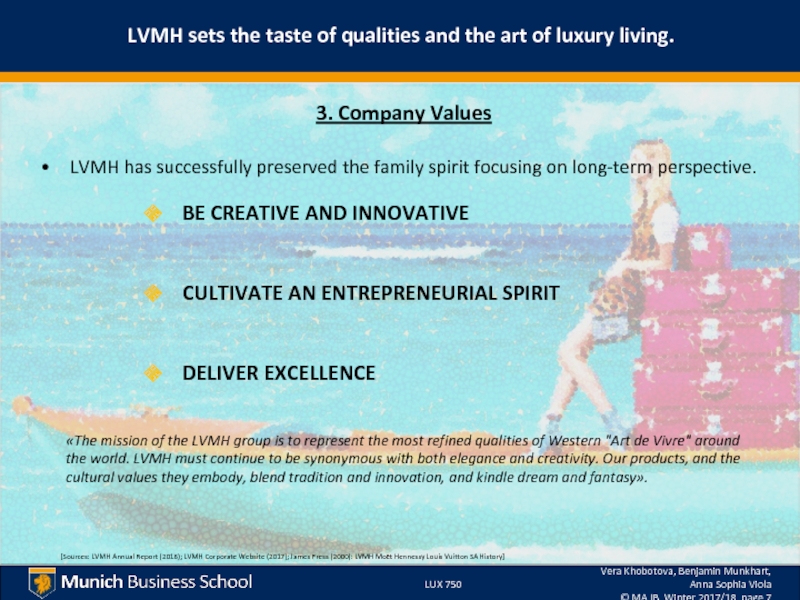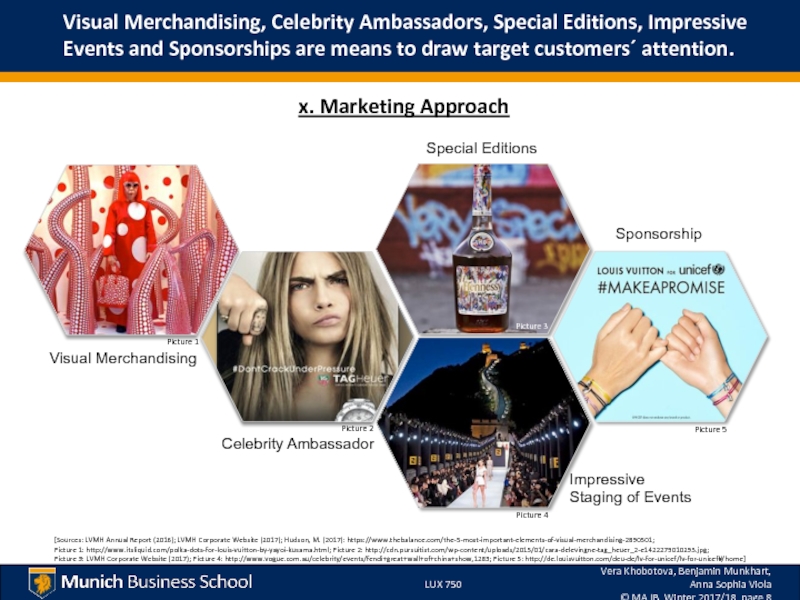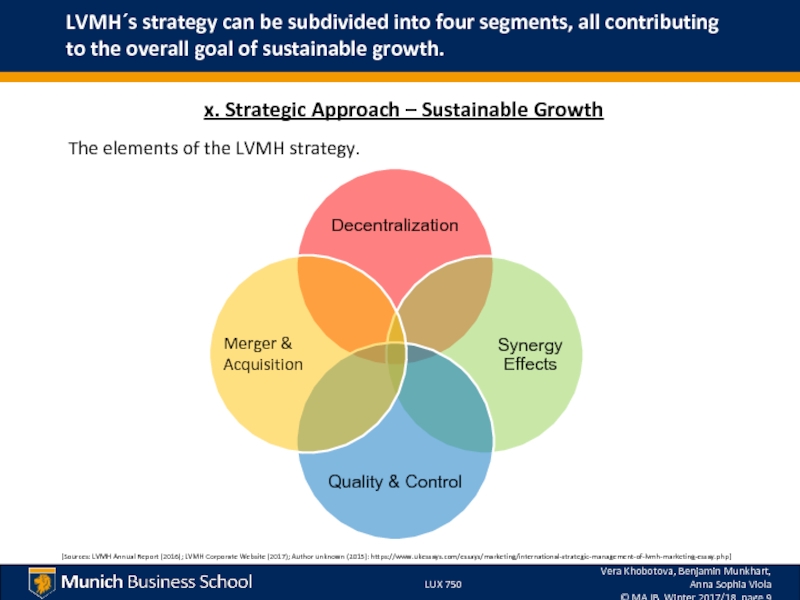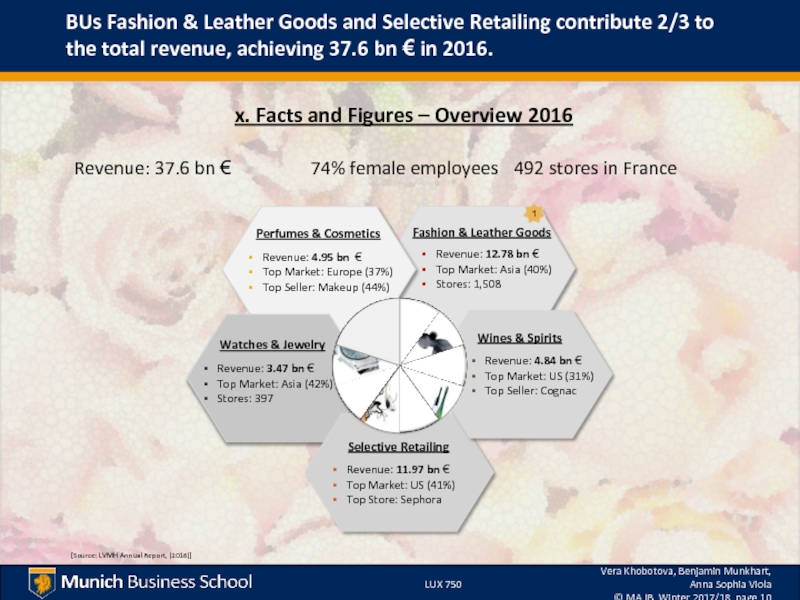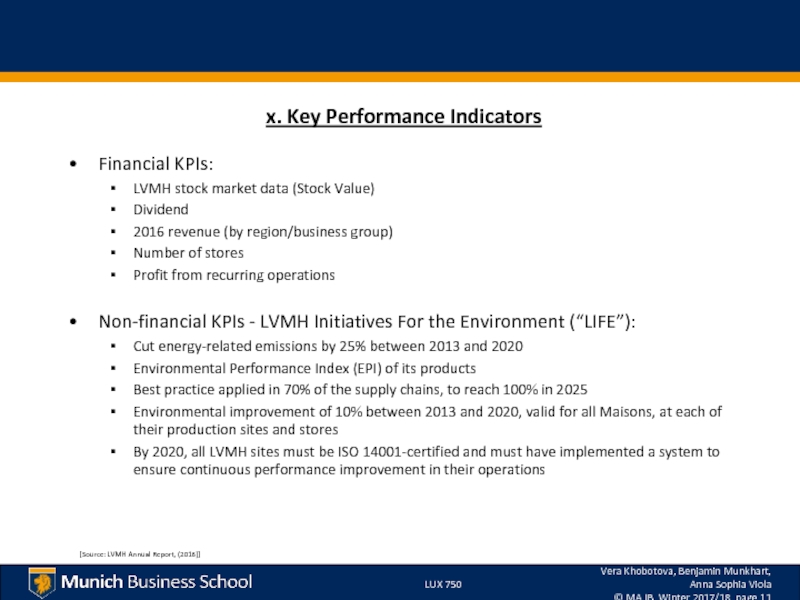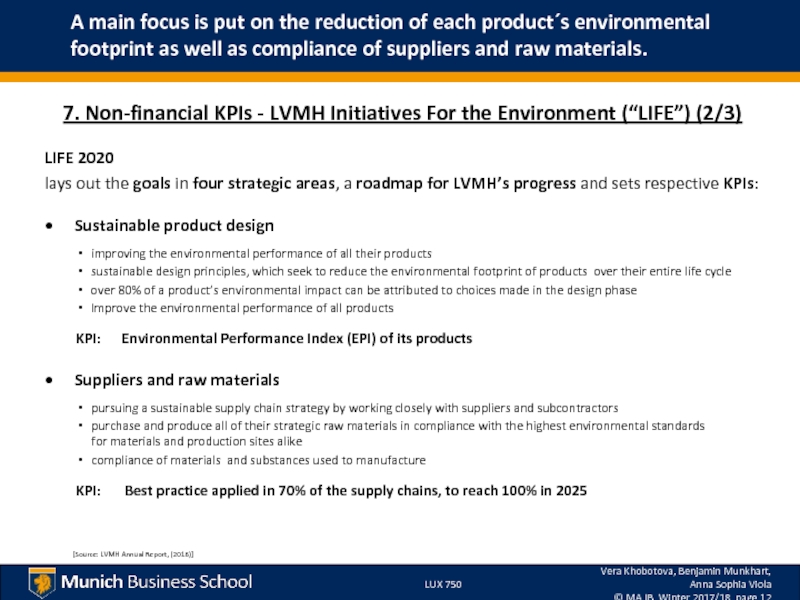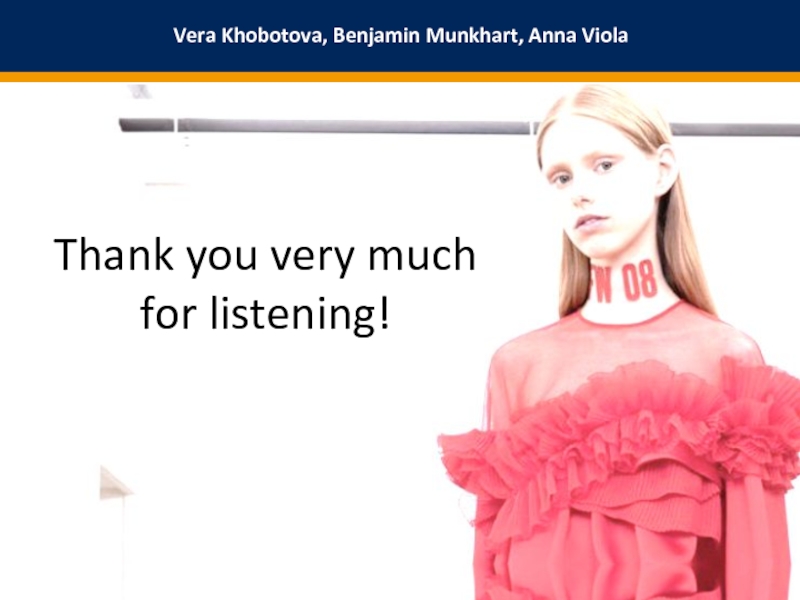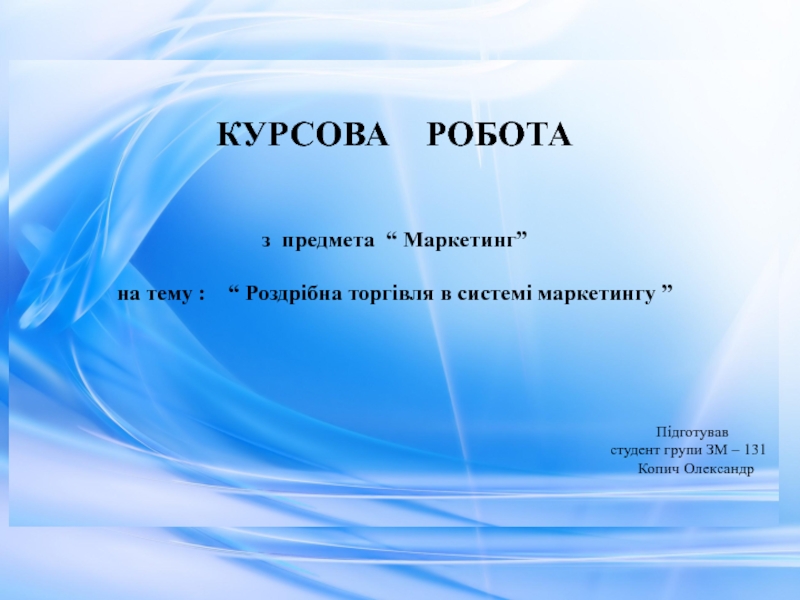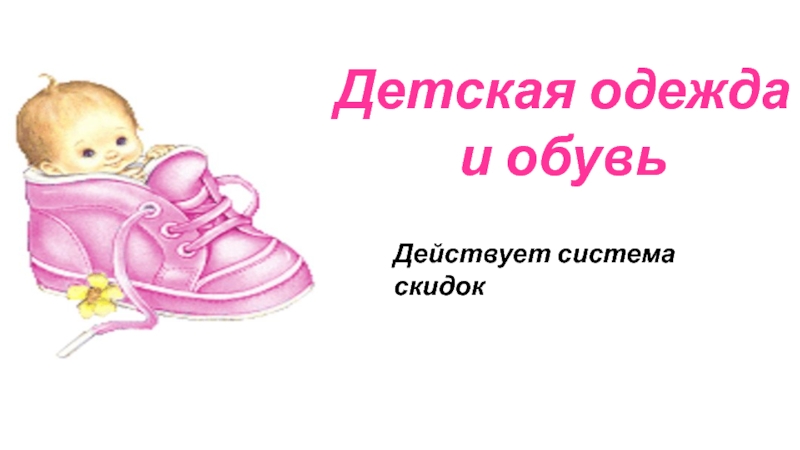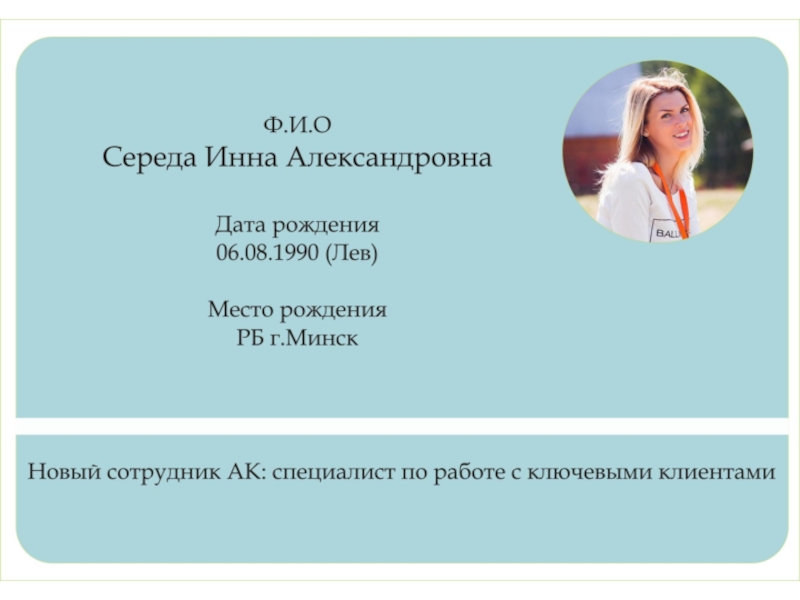- Главная
- Разное
- Дизайн
- Бизнес и предпринимательство
- Аналитика
- Образование
- Развлечения
- Красота и здоровье
- Финансы
- Государство
- Путешествия
- Спорт
- Недвижимость
- Армия
- Графика
- Культурология
- Еда и кулинария
- Лингвистика
- Английский язык
- Астрономия
- Алгебра
- Биология
- География
- Детские презентации
- Информатика
- История
- Литература
- Маркетинг
- Математика
- Медицина
- Менеджмент
- Музыка
- МХК
- Немецкий язык
- ОБЖ
- Обществознание
- Окружающий мир
- Педагогика
- Русский язык
- Технология
- Физика
- Философия
- Химия
- Шаблоны, картинки для презентаций
- Экология
- Экономика
- Юриспруденция
Luxury Markets and Strategies презентация
Содержание
- 1. Luxury Markets and Strategies
- 3. LVMH – Corporate Film 2012 Source: https://www.youtube.com/watch?v=NVrbHJl7u3g
- 4. LVMH is the largest luxury goods conglomerate
- 5. LVMH was formed by the merger of
- 6. [Sources: LVMH Annual Report (2016); LVMH Corporate
- 7. LVMH has successfully preserved the family
- 8. Visual Merchandising, Celebrity Ambassadors, Special Editions, Impressive
- 9. LVMH´s strategy can be subdivided into four
- 10. BUs Fashion & Leather Goods and
- 11. Financial KPIs: LVMH stock market data
- 12. A main focus is put on the
- 13. Vera Khobotova, Benjamin Munkhart, Anna Viola Thank you very much for listening!
Слайд 1
Luxury Markets & Strategies
Prof. Dr. Andrea Bookhagen
WS 2017/2018
Vera Khobotova, Benjamin Munkhart,
Слайд 4LVMH is the largest luxury goods conglomerate worldwide and focuses on
Foundation in Paris in 1987
Merger of Moët Hennessy & Louis Vuitton
Global Player in Luxury Goods Industry with 70 houses in 5 major sectors
CEO Bernard Arnault
1. Company Profile (1/2)
Picture 1
[Sources: LVMH Annual Report (2016); LVMH Corporate Website (2017);
Picture 1: LVMH Annual Report (2016)]
“Our business model is anchored in a long term vision that builds on the heritage of our Houses
and stimulates creativity and excellence.
This model drives the success of our Group and ensures its promising future.”
- Bernard Arnault
Слайд 5LVMH was formed by the merger of two players: Moët Hennessy
1743 – Foundation of Moët
1832 – Moët & Chandon #1 Champagne provider in Europe
1854 – Louis Vuitton opens his own packing and trunkmaking business in Paris
1885 – Louis Vuitton expands internationally
1969 – Louis Vuitton enters the Asian market
1971 – Merger Moët & Chandon and Jas. Hennessy & Company
1984 – Louis Vuitton goes public
1987 – Louis Vuitton and Moët-Hennessy merge in a $4 billion deal
[Sources: James Press (2000): LVMH Moët Hennessy Louis Vuitton SA History;
Picture 1: LVMH Corporate Website (2017)]
Picture 1
1. Company Profile (2/2)
Слайд 6[Sources: LVMH Annual Report (2016); LVMH Corporate Website (2017)]
LVMH is divided
2. Corporate Structure
Слайд 7
LVMH has successfully preserved the family spirit focusing on long-term perspective.
BE CREATIVE AND INNOVATIVE
CULTIVATE AN ENTREPRENEURIAL SPIRIT
DELIVER EXCELLENCE
«The mission of the LVMH group is to represent the most refined qualities of Western "Art de Vivre" around the world. LVMH must continue to be synonymous with both elegance and creativity. Our products, and the cultural values they embody, blend tradition and innovation, and kindle dream and fantasy».
[Sources: LVMH Annual Report (2016); LVMH Corporate Website (2017); James Press (2000): LVMH Moët Hennessy Louis Vuitton SA History]
LVMH sets the taste of qualities and the art of luxury living.
3. Company Values
Слайд 8Visual Merchandising, Celebrity Ambassadors, Special Editions, Impressive Events and Sponsorships are
x. Marketing Approach
Picture 1
[Sources: LVMH Annual Report (2016); LVMH Corporate Website (2017); Hudson, M. (2017): https://www.thebalance.com/the-5-most-important-elements-of-visual-merchandising-2890501;
Picture 1: http://www.itsliquid.com/polka-dots-for-louis-vuitton-by-yayoi-kusama.html; Picture 2: http://cdn.pursuitist.com/wp-content/uploads/2015/01/cara-delevingne-tag_heuer_2-e1422279010295.jpg;
Picture 3: LVMH Corporate Website (2017); Picture 4: http://www.vogue.com.au/celebrity/events/fendi+great+wall+of+china+show,1283; Picture 5: http://de.louisvuitton.com/deu-de/lv-for-unicef/lv-for-unicef#/home]
Picture 2
Visual Merchandising
Celebrity Ambassador
Impressive
Staging of Events
Special Editions
Sponsorship
Picture 4
Picture 5
Picture 3
Слайд 9LVMH´s strategy can be subdivided into four segments, all contributing to
The elements of the LVMH strategy.
x. Strategic Approach – Sustainable Growth
Merger & Acquisition
[Sources: LVMH Annual Report (2016); LVMH Corporate Website (2017); Author unknown (2015): https://www.ukessays.com/essays/marketing/international-strategic-management-of-lvmh-marketing-essay.php]
Слайд 10
BUs Fashion & Leather Goods and Selective Retailing contribute 2/3 to
Revenue: 37.6 bn € 74% female employees 492 stores in France
x. Facts and Figures – Overview 2016
[Source: LVMH Annual Report, (2016)]
Fashion & Leather Goods
Revenue: 12.78 bn €
Top Market: Asia (40%)
Stores: 1,508
Wines & Spirits
Revenue: 4.84 bn €
Top Market: US (31%)
Top Seller: Cognac
Selective Retailing
Revenue: 11.97 bn €
Top Market: US (41%)
Top Store: Sephora
Watches & Jewelry
Revenue: 3.47 bn €
Top Market: Asia (42%)
Stores: 397
Perfumes & Cosmetics
Revenue: 4.95 bn €
Top Market: Europe (37%)
Top Seller: Makeup (44%)
1
Слайд 11
Financial KPIs:
LVMH stock market data (Stock Value)
Dividend
2016 revenue (by region/business group)
Number
Profit from recurring operations
Non-financial KPIs - LVMH Initiatives For the Environment (“LIFE”):
Cut energy-related emissions by 25% between 2013 and 2020
Environmental Performance Index (EPI) of its products
Best practice applied in 70% of the supply chains, to reach 100% in 2025
Environmental improvement of 10% between 2013 and 2020, valid for all Maisons, at each of their production sites and stores
By 2020, all LVMH sites must be ISO 14001-certified and must have implemented a system to ensure continuous performance improvement in their operations
x. Key Performance Indicators
[Source: LVMH Annual Report, (2016)]
Слайд 12A main focus is put on the reduction of each product´s
7. Non-financial KPIs - LVMH Initiatives For the Environment (“LIFE”) (2/3)
LIFE 2020
lays out the goals in four strategic areas, a roadmap for LVMH’s progress and sets respective KPIs:
Sustainable product design
improving the environmental performance of all their products
sustainable design principles, which seek to reduce the environmental footprint of products over their entire life cycle
over 80% of a product’s environmental impact can be attributed to choices made in the design phase
Improve the environmental performance of all products
KPI: Environmental Performance Index (EPI) of its products
Suppliers and raw materials
pursuing a sustainable supply chain strategy by working closely with suppliers and subcontractors
purchase and produce all of their strategic raw materials in compliance with the highest environmental standards
for materials and production sites alike
compliance of materials and substances used to manufacture
KPI: Best practice applied in 70% of the supply chains, to reach 100% in 2025
[Source: LVMH Annual Report, (2016)]
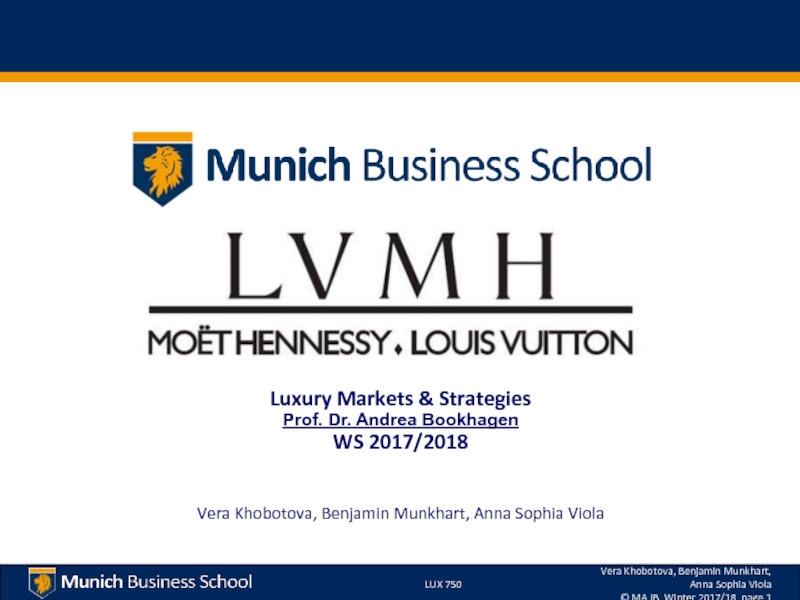
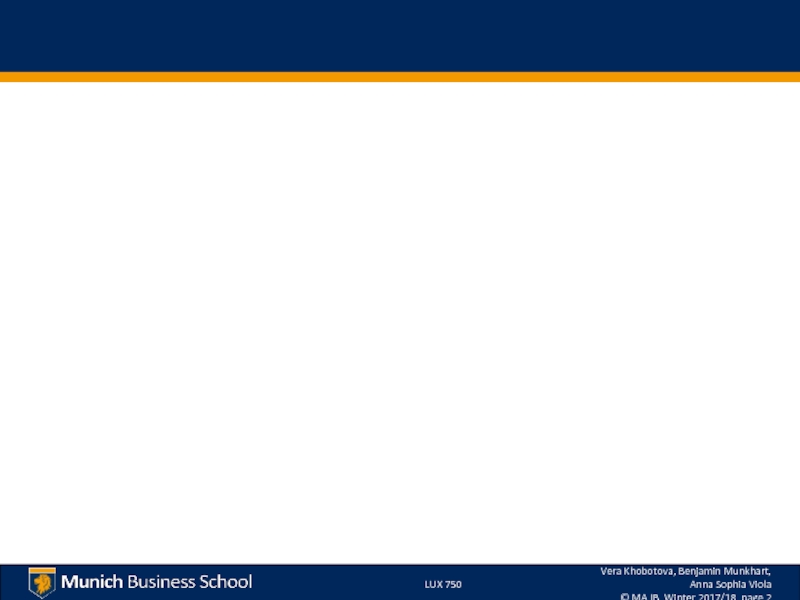
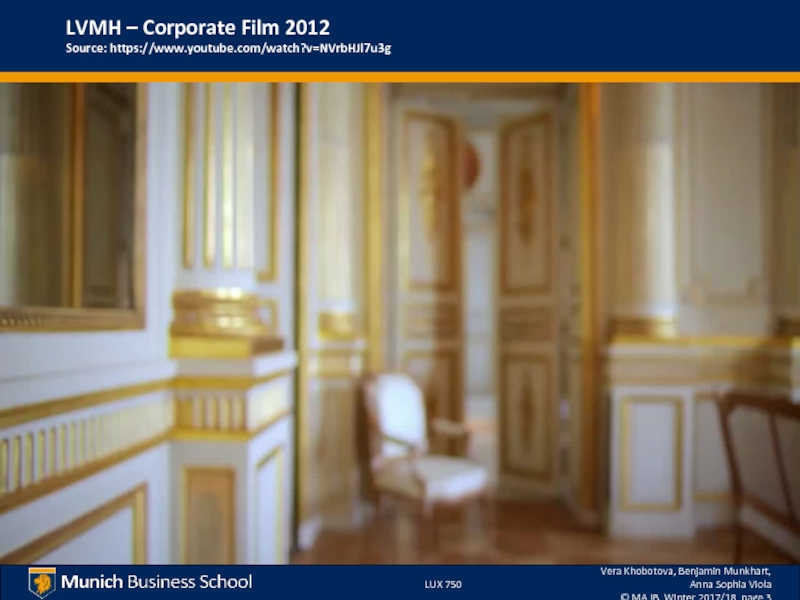
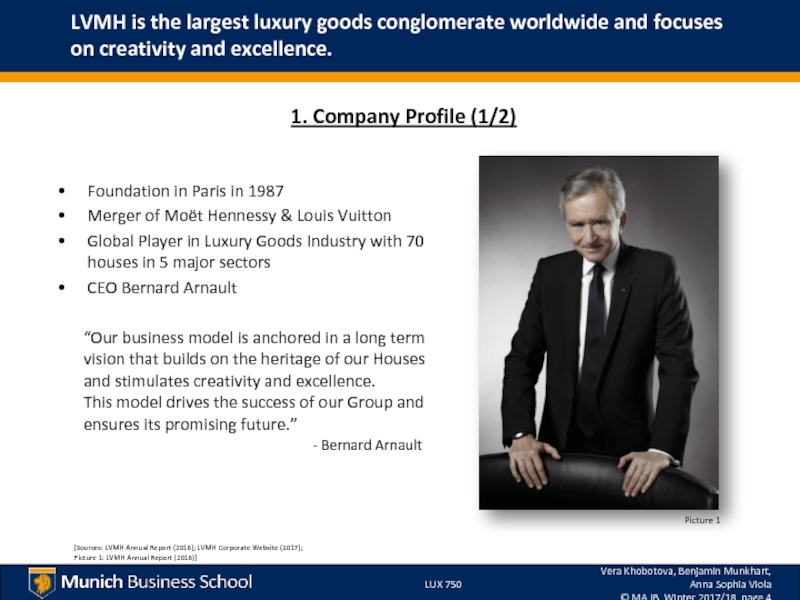

![[Sources: LVMH Annual Report (2016); LVMH Corporate Website (2017)]LVMH is divided into the five major](/img/tmb/5/401624/1b772be52b18870b59a80218c07b6e90-800x.jpg)
